More than a decade ago, Donna Sharpe, a retired office administrator from Calgary, travelled to Bucerías, Mexico, for the first time.
Sharpe was visiting a Canadian friend who lived in the town about 40 minutes north of Puerto Vallarta and became enchanted by its traditional character, the warm weather and the strong sense of community. She has returned to Bucerías every winter since.
After renting in downtown Bucerías for five years, Donna and her Canadian friends bought a stacked duplex in Zona Dorada, a highly desirable Bucerías neighbourhood, where Sharpe spends six months every winter — a heavenly escape from Calgary’s frigid temperatures.
Perched on a second floor, Sharpe’s home allows her a panoramic view of Bucerías and its narrow streets, abuzz with activity and lush vegetation. Under the protective shade of palm and Amate trees, craft vendors and food stalls frame Bucerías’s main streets, and the salty, warm scent of the ocean blends with the aromas of freshly cooked seafood.
Every year hundreds of thousands of Canadians like Sharpe escape to sun and sand destinations in Mexico during the winter months.
But after a couple of winters in Mexico, Sharpe realized her little piece of paradise was part of a growing problem. “I always knew there were really big inequities, I just didn’t realize how big the chasm was,” she recalled.
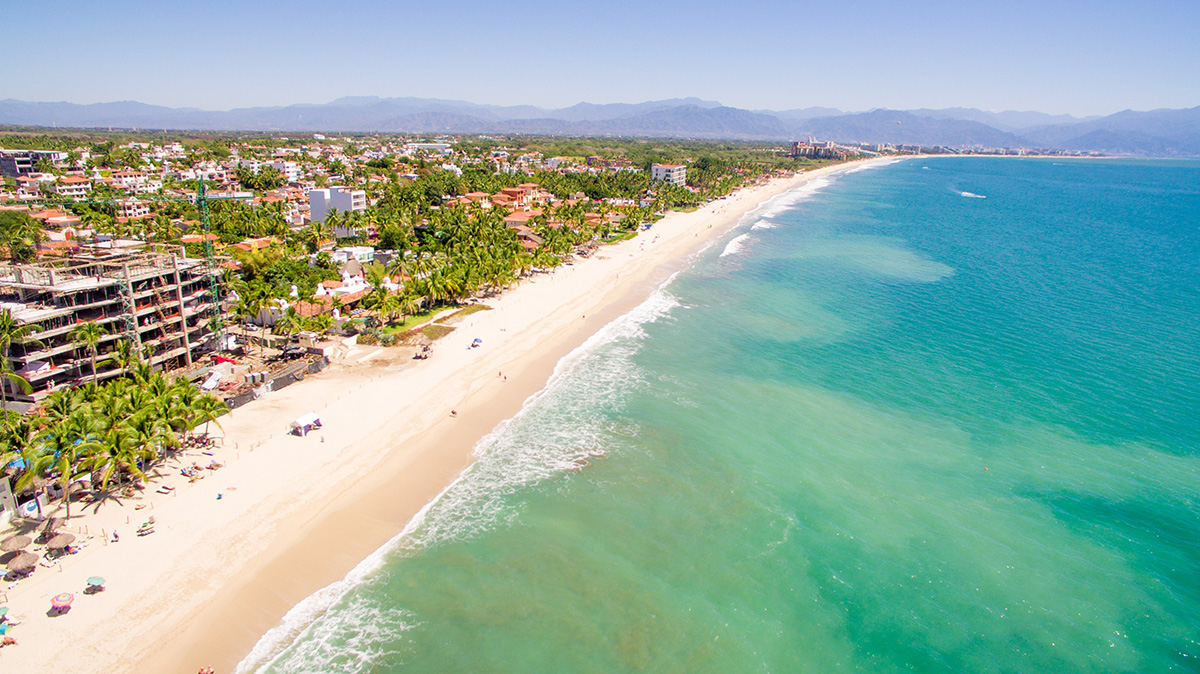
It wasn’t until she started volunteering at a spay and neuter clinic that Sharpe realized the depth of the problem. The clinic took her to some of the poorest neighbourhoods in the area, where residents live among unfinished houses, dilapidated roads, and stray cats and dogs.
Canadians living in our country’s largest cities have experienced the consequences of gentrification, like increased costs and displacement. In Vancouver and Toronto, rising housing costs have been blamed on speculation and foreign investment, among others causes and governments have responded with policies to help mitigate the problem.
But in the global context, Canadians too play an important role as gentrifiers.
Whether they stay in a resort, a timeshare, Airbnb or own a vacation home, the scale of this yearly migration has significant consequences for the communities they visit.
Michael Clancy, a professor of politics, economics and international studies at the University of Hartford in Connecticut, said gentrification is “one of the primary negative effects” of tourism.
“It really raises the cost of living… and sooner or later, it makes it really hard for people to stay there,” he said. “It’s kind of a byproduct of years and years of government officials and the private sector promoting more and more tourism to their areas.”
Yearning for the Mexican dream
The popularity of Puerto Vallarta gave rise to Riviera Nayarit.
Located just northwest of Puerto Vallarta, along the coast of Banderas Bay, Riviera Nayarit consolidates new and old development along the shoreline: modern Nuevo Vallarta, filled with resorts and golf courses, at the southern end; the traditional towns of Bucerías and La Cruz de Huanacaxtle; and luxury resorts and condos in Punta de Mita, at the northern tip. These places have attracted expats since before the tourism boom of the late 1990s. (Its increasing popularity among B.C. folks has earned Bucerías the nickname B.C.-rias.)
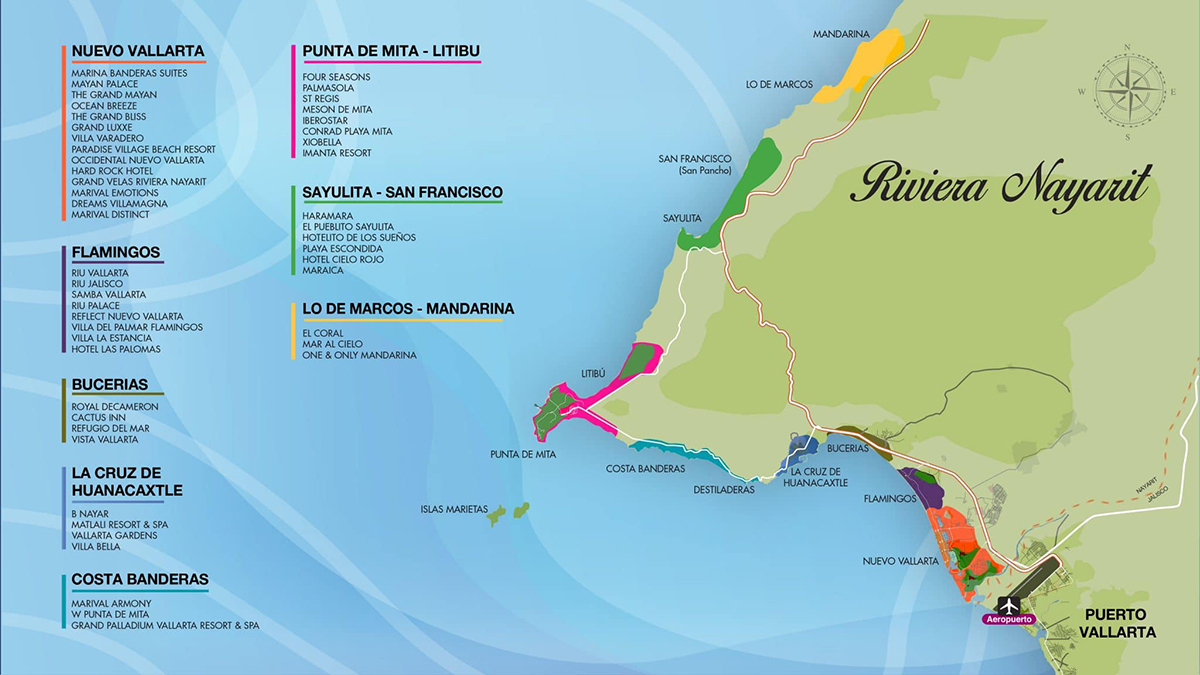
“A lot of Canadians like the small towns, [to] be in touch with the culture,” said Richard Zarkin, spokesperson of the Riviera Nayarit’s conventions and visitors bureau.
“Bucerías and La Cruz, they have very good restaurants, they’re not the very high end that you find around the Punta de Mita area or Nuevo Vallarta, they are great taco stands that people go to all the time,” he said, adding the town has a “very unique, very Mexican” character.
Lured by the warm weather and lower cost of living, three years ago Andrew Hickson and his wife purchased land together with a friend and built a home in La Cruz — a 15-minute drive west from Sharpe’s home in Bucerías.
The couple, then semi-retired, visited other popular retirement destinations in Mexico, including Sayulita, Chapala and the Yucatan before settling in La Cruz. “It’s a lovely place… and it had everything that we both wanted,” Hickson said.
“The climate is the number one driver of people that come down here,” he said. The cost of living is another. “It’s considerably less than Canada.”
Before retiring and moving nearly full-time to Mexico, Hickson and his wife lived on Pender Island, B.C., in the winter and ran a vacation property in north Saskatchewan from April to September. “We still work online, taking reservations and whatnot,” Hickson said. “But last year we decided that five years was enough and that we would totally retire.”
The cobbled streets lined with houses surrounded by bougainvillea bushes and topped with clay tile roofing give the neighbourhood a “traditional” character. But the area where Hickson’s home is located is not where the locals live.
The residential developments in that area “can be considered exclusive,” Luis Carlos Tapia, who was born and raised in La Cruz, told The Tyee. “A piece of land there costs about 800,000 pesos,” he said, about $50,000 Canadian. (The figure is likely outdated.)
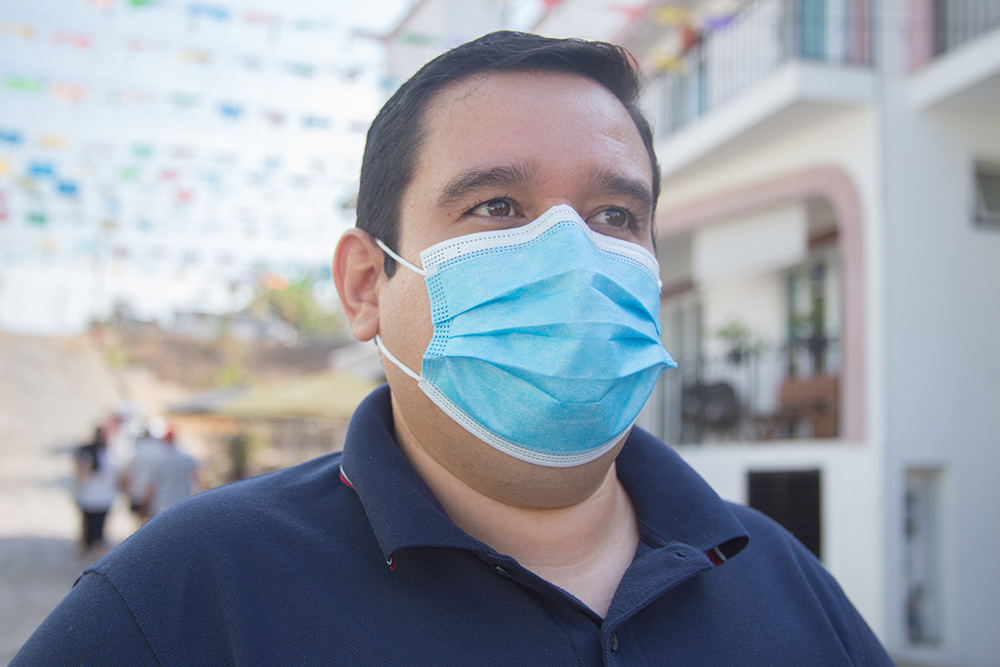
That may be a bargain to a Canadian like Hickson, but for a local resident it can be unaffordable, even for a computer engineer like Tapia.
The local workers get to live farther inland on the other side of Highway 200, where properties are still valued in Mexican pesos and residents experience water shortages, sparse greenery and subpar construction of housing and public infrastructure.
“If you go up over the hill, on the other side of the 200, you’ve got basically a ridge along there, and the gringos stop. Most gringos have no idea what it’s like over there,” said Sharpe.
Behind an enclave’s wall
This lack of awareness is common among visitors to sun and sand destinations, especially if they choose to stay in a secluded resort for two weeks.
But those planning to purchase a home and live there part of the year, or retire there, could ask more questions beforehand, said Clancy.
Pat and Lucy Pascal, a Calgary couple nearing retirement, fell in love with Mexico in 1984 during their honeymoon and have regularly visited since 2005. “We would just spend time at different all-inclusives, and we would usually spend a month,” Lucy explained, emphasizing they didn’t explore the area outside the resorts during those trips.
In 2008 they purchased their second home, a condo in Nuevo Vallarta. “We like the condo that we bought because there’s a large number of Mexicans that own,” she said. “We got a reasonable price to buy on the beach.”
But they didn’t know much about the area other than it was beautiful, quieter than Puerto Vallarta and a 10-minute drive from the airport.
Nuevo Vallarta is an enclave designed to look and feel familiar to visitors: wide windy roads that resemble just any suburban neighbourhood in Canada, but with a tropical flair. It was laid out to maximize oceanfront property and access to the amenity-filled marina.
The Pascals’ beachfront condo is walking distance from a shopping centre, fine dining and even a private hospital, all located along the marina and built to serve Nuevo Vallarta’s wealthy visitors and residents. The reality of the locals is hidden behind a wall.
As the resorts have spread along the beach — one company, Vidanta, now has four hotels, a golf course and dozens of restaurants — the town of Jarretaderas has lost both its beachfront and its access to the Ameca River. The few roads leading into the town lose their lush green medians and boulevards as soon as you turn the corner away from Nuevo Vallarta.
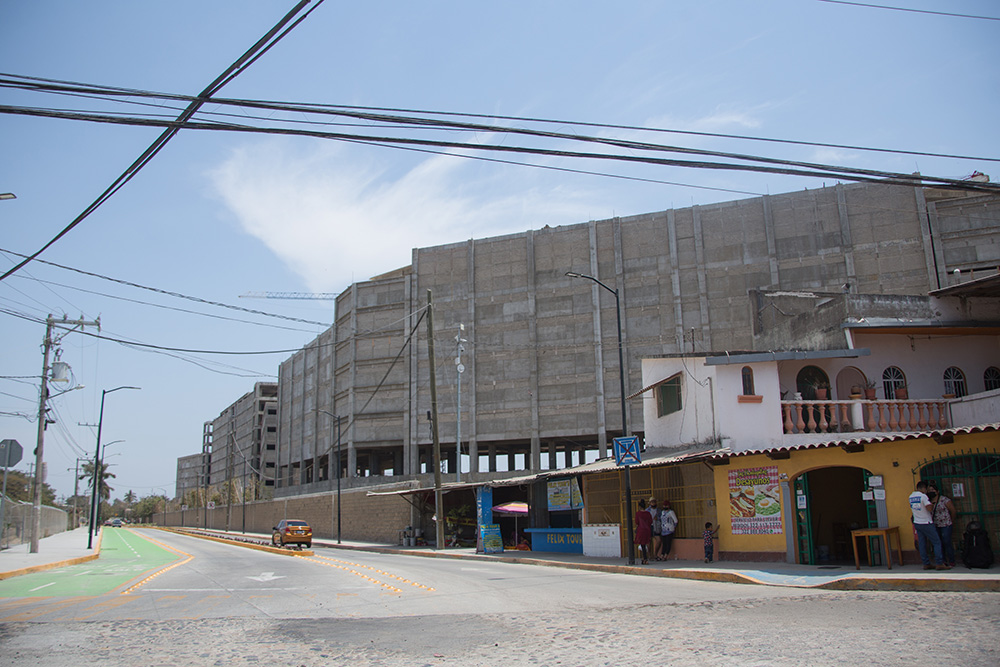
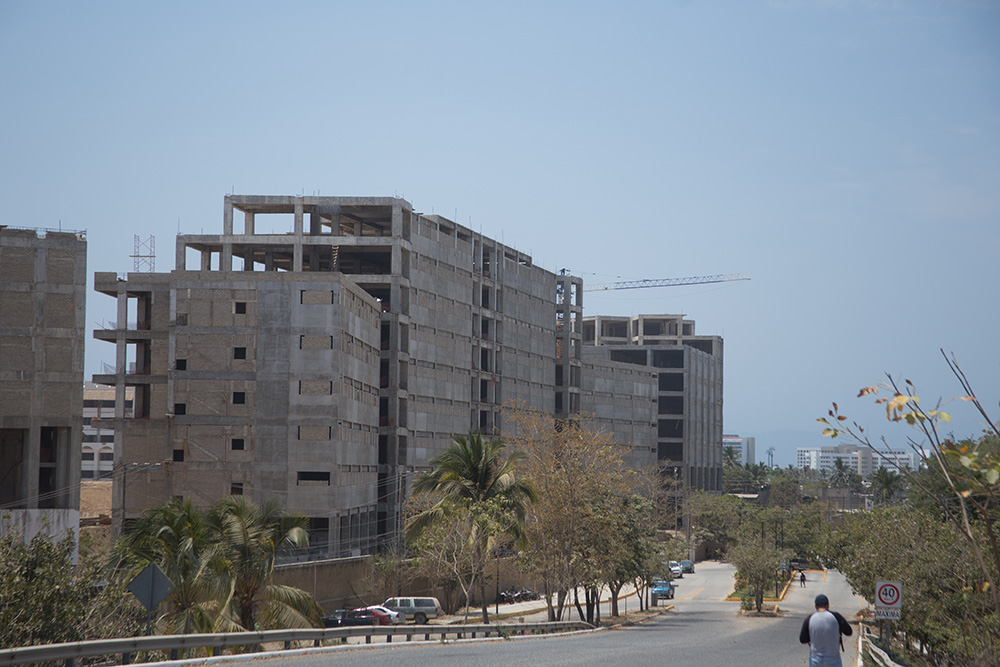
“It’s very upsetting and disappointing that Vidanta has basically just barged in there,” Pat Pascal described. “And it’s building and taking over and splitting that little town. It’s really sad to see, they’ve basically walled the community.”
And this is precisely what responsible visitors should be wary of, said Clancy.
“One of the biggest things to get people to think about is: To what extent is their vacation taking place in an enclave?” he said. An enclave is not like the rest of the country, he added. “It’s this sort of set-aside place, it’s almost like a gated community.”
Truly a bargain holiday?
Even though many Canadians choose to stay in La Cruz and Bucerías and support the locals as much as they can, thousands of others prefer the perceived safety and comfort of a separate environment like Nuevo Vallarta.
Yet in both cases the influx of tourists causes land values to skyrocket — and the cost of living along with it.
“One of the things that tourism usually brings with it at a really local level is inflation,” Clancy said. “It really raises the cost of living in these towns and so people can’t afford housing. They can’t afford a lot of the basics of living.”
The influx of tourists and snowbirds has pushed real estate prices to levels that exclude those who are there to work. In a well-serviced, walkable town like Bucerías or La Cruz, a two-bedroom home rents for about $1,000 — a bargain for a Canadian visitor but triple the monthly median income in the area. According to Glassdoor, a hotel concierge makes about $810 per month, plus commissions on sales.
And this problem is starting to expand to communities on the other side of the highway that had been more affordable. “There have been a fair number of gringos who have bought up on the ridge of the hill, and I am afraid that’s going to be exploited. I’m afraid [gringos] are going to start buying up there,” Sharpe said.
And that could leave Mexican residents in the communities homeless.
“Most of homes are rentals. And there are some avaricious property owners that will sell out from under them… and that’s just going to put the Mexican people who live and work here… it’s just gonna put them further and further out. And it’s wrong.”
Hickson said some of his acquaintances are already moving into those communities. “They’re all people that have in the past lived on the beach,” he explained, and seem to be looking for somewhere quieter.
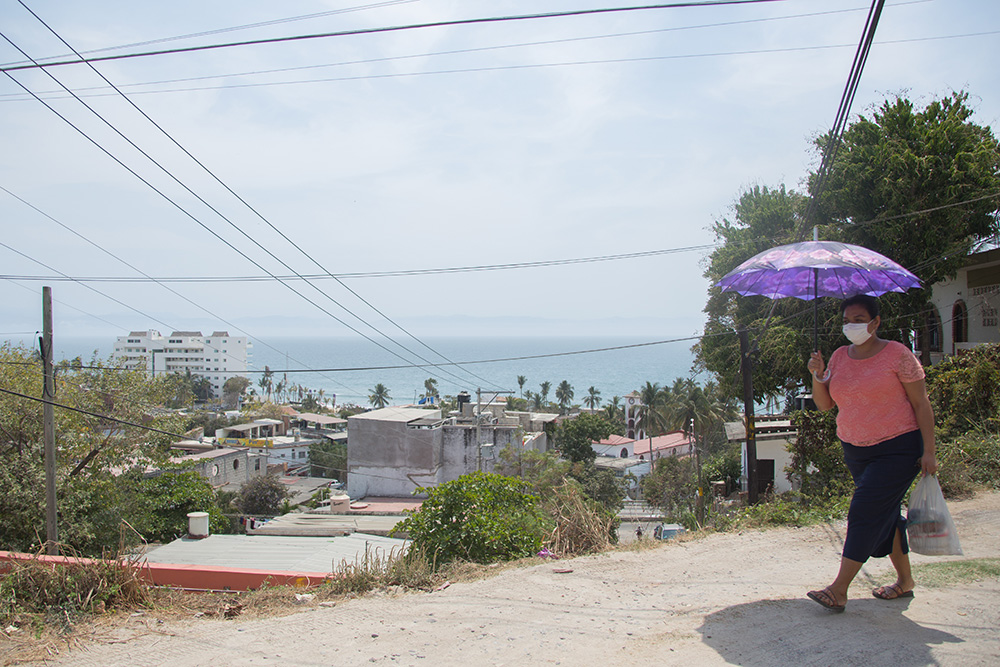
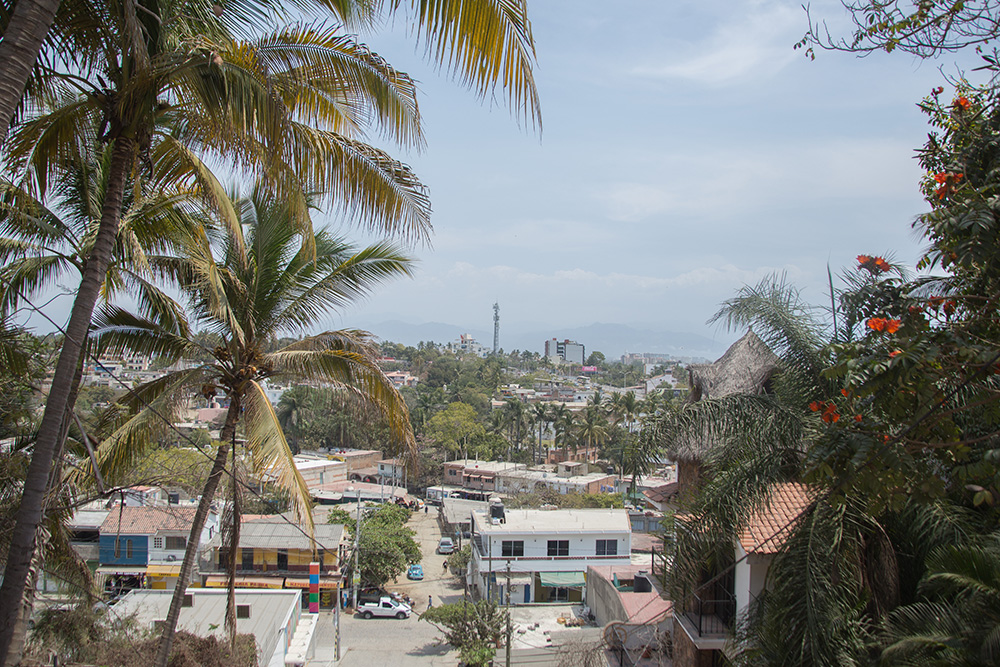
In an area where the livelihood of most workers depends on tourism, local authorities do little (if anything) to mitigate the impacts of tourism on the local community, whereas other destinations like Barcelona and Hawaii have already started to rethink their reliance on tourism and implemented policies in favour of the local community.
“Some governments are pushing back in this more narrow way, where they’re saying, ‘OK, we maybe can’t stop all these tourists from coming, but what we can do is limit some of the ways in which we are attracting certain kinds of tourists,’” Clancy said.
This isn’t happening in Mexico yet. Riviera Nayarit, like most beach destinations in Mexico, was developed with a top-down approach led by the government and investors.
Formerly communally-owned agricultural lands, known as ejidos, were expropriated from the local farmers and tourism infrastructure was built with public funds. Promised an improved livelihood, the local residents accepted tourism development and their displacement.
Tapia said there are some high-paying private sector jobs, but they are few, and the high cost of living affects all locals equally.
Sun, sand and sea tourism can be really problematic for a number of reasons, Clancy said. “Mass tourism is done on such a large scale that the advantage for the consumer, in that it can be less expensive, is the disadvantage for the destination.”
“A lot of money gets spent there, and then it flows back out of the country,” he added. “Profits that are earned go back to the shareholders that own the stock, many of whom live in the global north.”
But while visitors and their dollars can swiftly move in and out of the country, gentrification continues to affect the local community.
The connection between the two can be difficult for tourists to grasp, Clancy said. “This idea of me going on vacation to a place, and a year later somebody I’d never meet eventually finds that they can’t afford to live in a place that they’ve lived in for the last 20 years. I don’t think that most consumers make that connection necessarily, and that’s unfortunate.”
Leveraging the importance of consumers
In tourist destinations in the global south such as Riviera Nayarit, pro-tourism policies often force local residents into the margins both figuratively and literally.
Although the onus to look after tourism workers and local residents should be on the Mexican authorities, the government wants tourists to come and counts on the sector for about 8.5 per cent of GDP, Clancy says.
“So they’re not going to make the difference. They’re not going to make the choices.”
And anything that increases costs can drive tourists to another cheaper destination. “Sun and sand tourism is highly substitutable,” Clancy explains, as ultimately all visitors want is warm weather in February.
But consumers in the global north have the privilege and the means to make more ethical choices.
In Europe, the Slow Tourism movement “arose by consumers who wanted to have a better experience,” Clancy said. “Tourists started to ask questions about whether or not the impact they had when they went to these places is a good thing or a bad thing.”
As Canadians grow increasingly concerned about buying sustainable products that protect both the environment and the livelihoods of the producers, we should demand the same from the destinations we choose to visit.
“The whole idea of travelling from the global north, to go on your holiday in the global south, is always going to be problematic in a certain way,” Clancy said. “But you can make decisions.” ![]()
Read more: Travel
















Tyee Commenting Guidelines
Comments that violate guidelines risk being deleted, and violations may result in a temporary or permanent user ban. Maintain the spirit of good conversation to stay in the discussion.
*Please note The Tyee is not a forum for spreading misinformation about COVID-19, denying its existence or minimizing its risk to public health.
Do:
Do not: